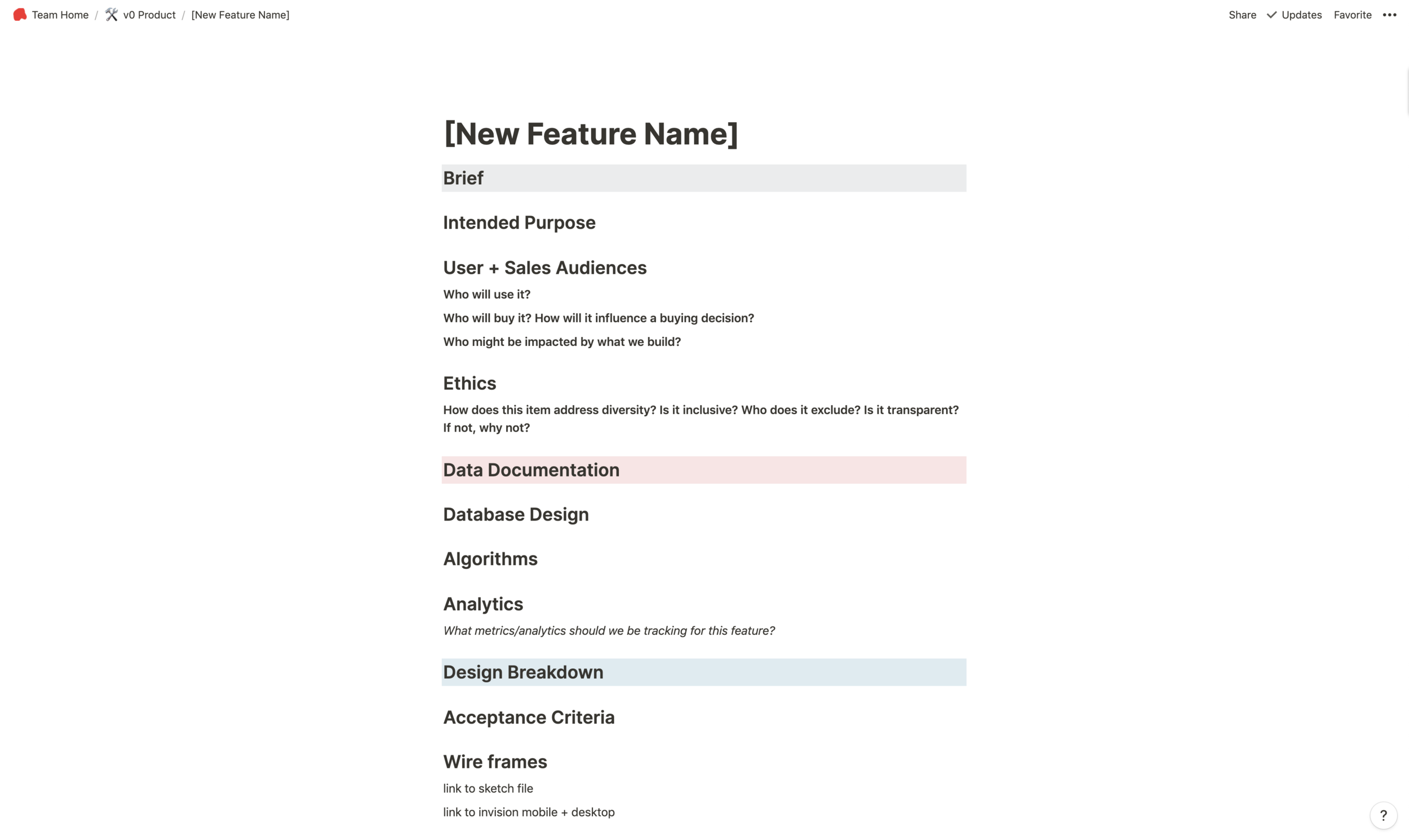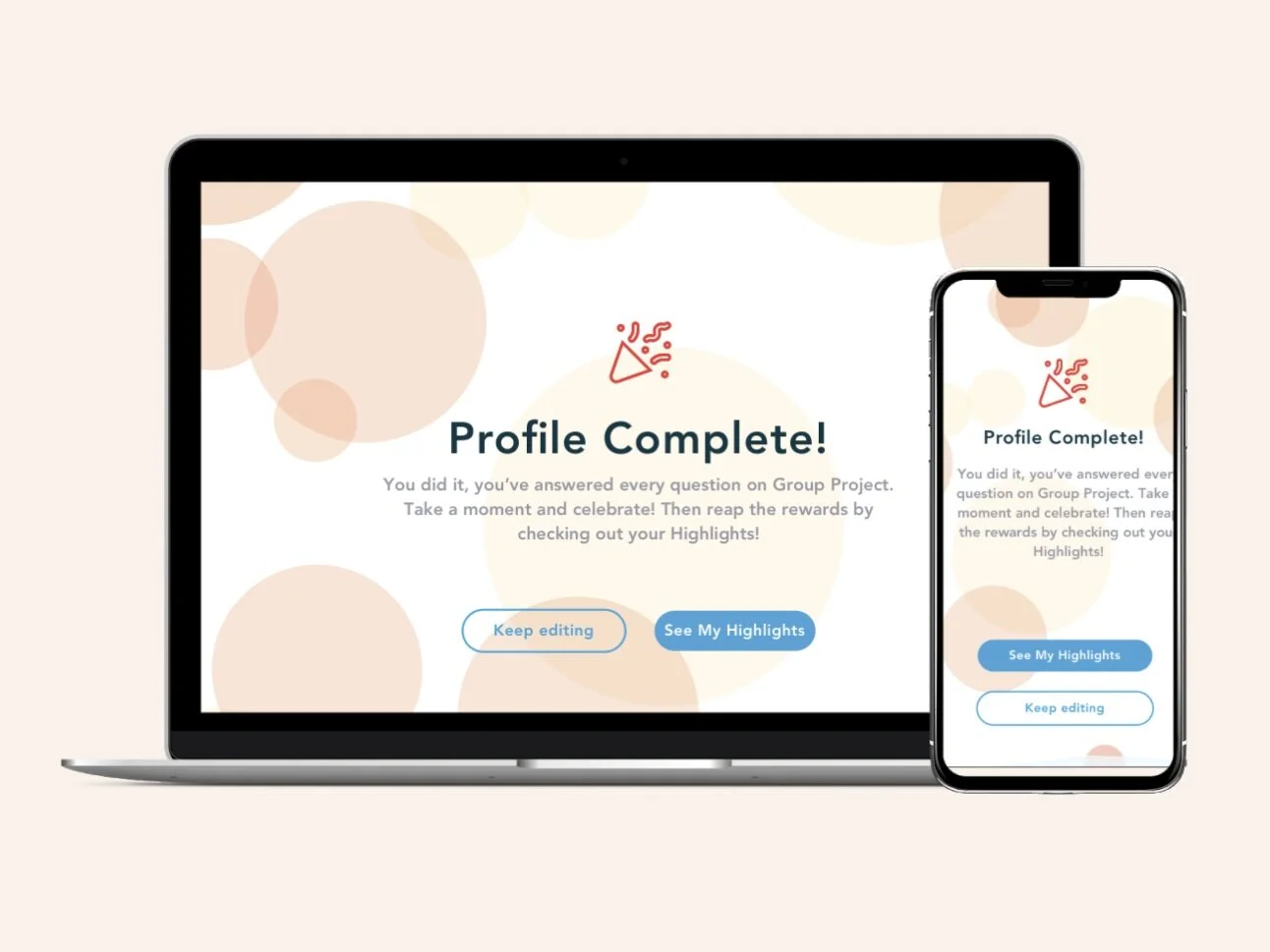Adding Workflows to Drive Momentum with Group Project
Designing workflows for product build to drive momentum and user focused design practices
I would like to take you through how I built the repeatable workflows for our product build at Group Project.
We were a four person team and we had a few contracted designers that would come in and out of projects as needed. As we grew, our founder, who was also head of product, needed to give more and more of her time to selling and developing our business: there was no longer a sole person driving a feature launch, and steps in the process were getting dropped or overlooked. I documented our design processes & built workflows to lift the burden off of individuals & provide the thrust we needed in the absence of a product manager.
Group Project is an early stage b2b SaaS company that builds data-driven tools to understand your team, and bring out their best work every day.
Our software helps companies recognize hidden talent, realize their team's full potential, and engage internal people to adapt to changing needs smoothly. Our tools are built to promote inclusion and reduce bias with smarter management decisions.
The end goal of Group Project was to design a platform that changed the internal structures of companies by rethinking the way you allocate people to work. To drive companies toward equitable change by empowering them to see their employees for their potential, abilities, & desire while valuing diversity - rather than the normative route of merit and bias and honoring whoever speaks the loudest.
I owned how Group Project works with people, internally and externally (ie contractors, clients, users, partners, network, etc). I owned how Group Project works together through configuring software and building internal tools. I owned how Group Project gets our work down, through leading team operations, facilitating meetings, and designing workflows.
30% Building Relationships: User Research, User Testing, Market Research, Client Management, Selling and Discovery calls, Building a Network
30% Internal Tools: Internal Glossary, Knowledge Base, CRM, Marketing Campaigns, Sales Tools
40% Championing Momentum: Team Operations, Tracking Progress, Team Culture, Meetings, Workflows and Documentation
We were a four person team — we didn’t have people dedicated to user research or QA, we were flexing to those as we saw the need for them.
The problem was we weren’t covering every base every time we built something new, and we noticed that we were dropping important steps. (e.g. early discovery, user testing, quality assurance).
So I took a step back and asked, what is the nature of the problem, Why are we dropping steps?, what are Team needs, and what currently exists?
I saw it was a documentation problem. The processes were there, we had been doing them, but as a small team, we didn’t have a dedicated PM driving our workflows or owning the wisdom of what might be the next step.
I first outlined the process: I identified the vital steps of a product build that covered everything from early concepts to delivery.
After reviewing what I had gathered, I saw that we not only needed something to drive our work, but also something to hold us accountable to our thinking & inventing.
I began documenting the process and I complimented it with building a framework for technical documentation.
The Approach
Documented Process in Notion.io, implemented in Asana.
A Documented Process: something to own our work
Order key steps
Allocate Ownership
Add Templates for what to do at each step (e.g. Design to Dev Hand-off)
I built a workflow and allocated ownership to every step. This allowed the workflow itself to take some of the burden off the teams by offering clear advancement and all the necessary information to move forward.
The workflow had its own thrust - instead of a PM the documented workflow could now drive the momentum of every product build.
New Feature Worksheet: a framework for technical documentation, something to own our thinking & inventing
It helped answer the who, what, where, why & how before building, to ensure we asked the right questions and stuck to the quality of our creation.
We wanted to be thorough in considering our users at the top - not just the user behaviors, motivations, & goals - but the impact and ethics of what we were building. Beyond accessibility we wanted to design for impact. Are we being inclusive in the way this tool will impact a user? Is that impact ethical? Is it equitable?
From there it moves into the nitty gritty of the build requirements.
The New Feature Worksheet, our framework for technical documentation
The Impact: Sustained Momentum
Created a workflow that had its own thrust - instead of a Product Manager, the documented workflow could now drive the momentum of every product build.
The Impact
The workflow in practice: Building in Celebration
A part of group project is a self report, which asks people to self-report & self-assess their competencies & abilities at work.
I noticed in the early stages of testing this product and doing user research - that people were struggling to complete the self-report & once they finally did, they were left feeling underwhelmed with the feedback.
It was clear that the users expected recognition for completing that work.
Technical Documentation for Completion Experience
This project is special to me because it was the direct result of my time spent doing user research - I got to see the magic of human-centered design, of being the voice of the user. Adding celebration and play often gets overlooked.- in the follow up sessions, I saw users urging other users to get to the end. I just loved how something so simple as positive reinforcement, aka pretty bubbles, lifted the cognitive exhaust for or users.
It was because we had the build workflow & documentation framework in place that our team was able to take on user requests - going beyond basic infrastructure and taking the time to listen and having the time to build for our users needs.
So we reviewed the user flow of this experience following the documented process - considering the user, the impact of the tool, & the outcomes.
The result - we redesigned the experience to include feedback at every step. Which took the form of nudges & a celebratory microinteraction when the user completes the task or chooses to complete the task. The completion requirements were also redefined to ensure the required data points per user/client were being prioritized.
Wireframes of our micro-interactions, designed to celebrate profile completion.









